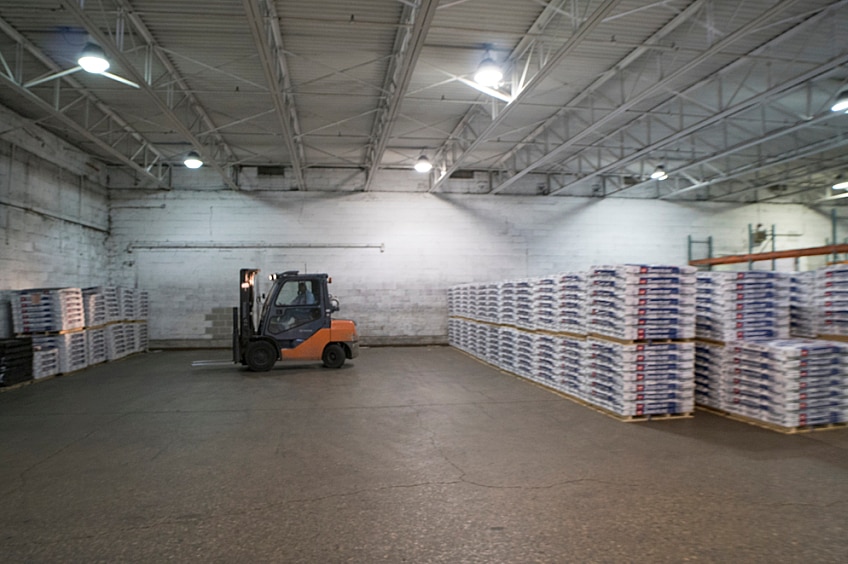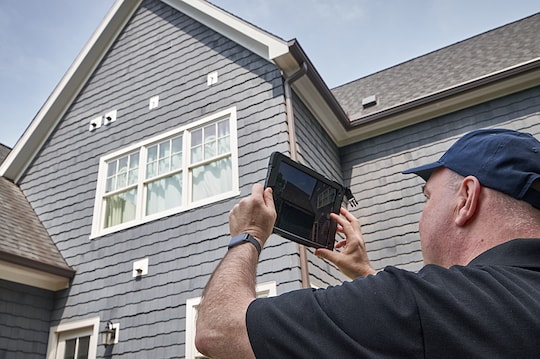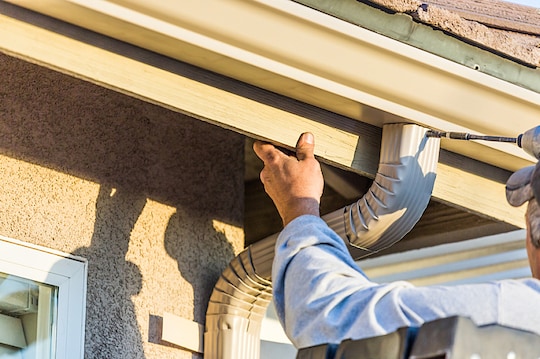
Taking on a new roofing project means collecting plenty of information before you even consider stepping foot in a roofing supply store. The key is to ask the right questions—and know how to find the answers you need.
We've assembled some answers to get you started on the right foot. Here's how to prep for your next project.
Can I Install My Own Roof?
If you decide to replace your own roof, there are several considerations to keep in mind. For example, a roofing job will require a lot of physical exertion, exposure to the elements, working at tall heights, and carrying heavy materials so you will need to be sure that you can work under these conditions. You will also need to protect yourself with safety glasses, gloves and fall protection equipment, among other things. No matter how big or small your roofing project is, you may need a permit, your work must comply with local building codes, and you'll need to follow the manufacturer's instructions to properly install the shingles as well as the accessories that make up your roofing system.
As you can see, roofing projects are complex and are best left to professional roofing contractors* who are trained and experienced. Contractors who are certified by a manufacturer may be able to offer you enhanced warranty coverage and will be able to assist you with any issues that you may have with your roof.
What Supplies Do I Need for a Roof?
Removing existing material, replacing your entire roof system, and replacing shingles are all different projects requiring a unique set of supplies. For example, recovering an existing roof will use fewer materials than removing and replacing a roof or installing one from scratch.
However, there are several basic materials you should be aware of as you assess your own roofing needs. Standard materials for a roofing project include:
- Underlayment: Underlayment (either synthetic-based or asphaltic) is needed for a new roof to protect the plywood or sheathing on the roof deck.
- Leak Barrier: This is a self-sealing protection underlayment to protect vulnerable areas of the roof against wind-driven rain and ice dams. If you live in a cold climate, building codes may require you to install a leak barrier.
- Drip edge: This is a non-corrosive metal lip that keeps shingles up off the deck at the roof edges. It also helps extend the shingle out over eaves and rakes to allow water to drip off of the roof while providing a finished look.
- Hook blade or utility knife: These are used to cut shingles and underlayment to fit your roof.
- Roofing nails: These nails are used to attach asphalt shingles and other roofing accessory products to the roof deck. For quick installation, a roofing nail gun attached to an air compressor may be used.
- Roofing cement: Shingles may need to be hand-sealed to the roof deck with a dab of roofing cement in areas of high wind, cold weather, or steep slopes.
- Plastic cap fasteners: These are used to attach synthetic underlayment to the sheathing on the roof deck before installing a new roof.
- Flashing: Components used to weatherproof or seal roof systems at perimeters, penetrations, walls, valleys, chimneys and other places where the roof covering is interrupted or terminated.
- Asphalt shingles: There are many varieties available in different styles and colors. You'll want to choose a durable shingle with a good warranty that will protect your home for years to come.
- Ventilation: A balanced system of intake vents (at or near the soffits) and exhaust vents (at or near the ridge) that allow a continuous flow of air through the attic, helping reduce excess heat and moisture build-up.
Apart from the materials listed above, several tools and miscellaneous supplies are needed to complete a roof installation:
- Roofing nail gun
- Staple gun
- Air compressor
- Crowbar
- Hammer
- Flat-edge shovel
- Tarps
- Tape measure
- Ladders or scaffolding
- Chalk line (blue)
- Fall protection equipment
- Additional PPE (Personal Protective Equipment) such as gloves and safety glasses
Where Should I Purchase Roofing Supplies?
When looking for roofing supply stores or roof centers, seek out good customer service. Local stores are often best, as you don't have to travel far to ask questions and they may offer delivery options. If they do offer delivery, confirm where the materials will be delivered—on the ground or directly to your roof. Getting the materials on the roof by hand is hard work. Some suppliers can lift them there for you.
You can bring your hunt for roofing materials online by searching for "building supplies near me," "roofing supply near me," "roofing supply store," or other similar search terms. However, you want to make sure the supplier you choose is a company you can trust with a local branch or store if you need help.
The GAF Distributor Locator can help you find a supply store near you that carries GAF products. The tool is simple to use: just enter your zip code and get a list of suppliers in your area, including contact information. Nationwide suppliers, like ABC Supply and Beacon Building Products, carry GAF products in many major cities.
How Much Does a Roof Cost?
The cost for a new roof varies by area, type of shingle you install, the size and shape of your roof area, and the number of roof penetrations.
Contact contractors in your area* to get a better estimate of what a roof installation will cost before you decide if you want to do it yourself.
* Contractors enrolled in GAF certification programs are not employees or agents of GAF, and GAF does not control or otherwise supervise these independent businesses. Contractors may receive benefits, such as loyalty rewards points and discounts on marketing tools from GAF for participating in the program and offering GAF enhanced warranties, which require the use of a minimum amount of GAF products.



